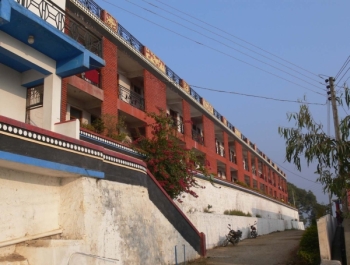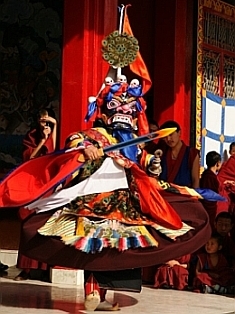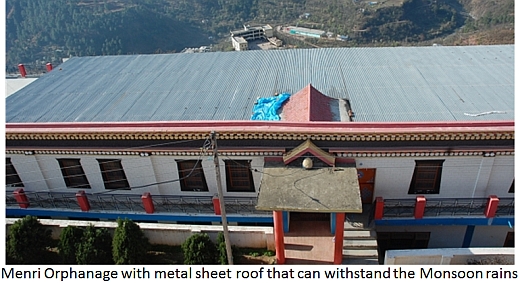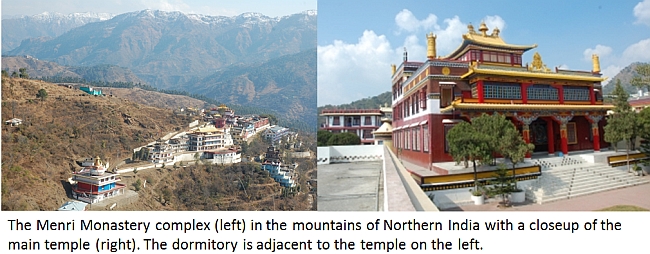Menri Roof Restoration Project

The dormitory, home to about 100 Bon monks, has a simple concrete roof and has developed serious leakage in several places. A number of monks’ rooms have moldy ceilings and walls, which is affecting the health of the monks. Some rooms have become unusable with moisture leaking through the ceiling and walls. The areas of leakage are increasing as the roof is exposed to the heavy monsoon rains every year during June-September.
During his visit to Olmo Ling in 2013, His Holiness 33rd Menri Trizin requested Olmo Ling founders Iris Grossmann and Tempa Dukte Lama to help raise funds for replacing the roof with a new metal sheet roof. Thanks to a generous large gift received in 2014 the monastic center has been able to purchase materials and begin the roof replacement.
Please support us in raising the required funds to complete this project.

The importance of Menri Monastery
Situated in Dolanji in the mountains of Northern India, Menri Monastery is the main spiritual center of the Tibetan Bon tradition in exile. Menri offers a home to hundreds of monks, nuns, and Tibetan children, and the opportunity for monks and nuns to study within the Bon system of higher education toward the Geshe (doctor of philosophy) degree. Menri and its predecessor Yeru Wensaka have been the heart of the Bon tradition for many centuries. The original Menri Monastery was established in Tsang Province in Tibet in 1405 by Nyamed Sherab Gyaltsen. Hundreds of monks from all over Tibet lived there, upholding the ancient monastic education system of philosophical study, intense meditation practice and ritual. During the Cultural Revolution Menri was destroyed, threatening the foundation on which Bon as a living tradition had rested over several thousands of years.


In 1968 His Holiness 33rd Menri Trizin was selected by the Bon protectors to serve as the spiritual head of Bon and re-establish Menri in exile together with Yongdzin Lopon Rinpoche. The new Menri Monastery began with simple mud buildings on a piece of land given by the Catholic Relief Service. With the tireless and selfless work of His Holiness, Yongdzin Lopon and monks, nuns and laypeople, over the last few decades the initial mud buildings have gradually been replaced with more permanent concrete buildings. His Holiness has established a monastic center with a dialectic school in which monks and nuns can study equally toward the Geshe degree, the highest degree offered within the Tibetan traditions. Menri has grown to include temples for the monks and nuns on opposite sites of the valley, a library with the Bon and Buddhist sacred texts, a dormitory and school for Tibetan children, a lay temple and guesthouse, a health center, craft workshops, and a farm and lay settlement on the surrounding lands.
The Large Monks’ Dormitory still has a simple concrete roof that is vulnerable to the elements and cracking in many places. It urgently needs a metal sheet roof to withhold the intense rain. The more recently completed orphanage building next to the dormitory already has a metal sheet roof (see picture below).



